Since high school I have been captivated by Auguste Rodin’s sculpture – it’s passion, uniqueness, brilliance, power, and beauty. Rodin was a visionary, controversial, provocative, and unorthodox artist who was often criticized by the French art establishment for his avant-garde denial of classical form and themes. Today he is recognized as one of the greatest sculptors in history. Castings of his works are displayed in art museums around the world.
“Auguste Rodin was responsible for breaking away from the stultified conventions of French sculpture of his time with his life-like, highly realistic, and often erotic approach to the human form.” Monique Laurent
“Auguste Rodin is one of the best known sculptors to have ever lived and his popularity throughout his own lifetime is unusual in the art world. Whilst being acceptable and still pushing the boundaries of modern art Rodin became known to many as the Father of Modern Sculpture. Today Rodin is still held in high regard and his sculptures are among the most renowned in the world.” Artble
Rodin’s Life
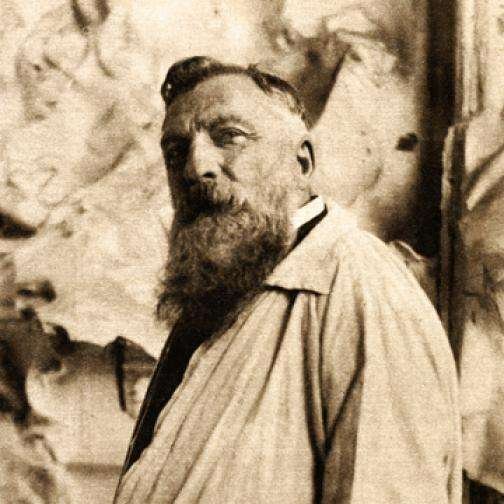
Francois Auguste Rene Rodin (1840-1917) was a French sculptor born to a working class family in Paris. He was largely self-educated. Between the ages of 14 and 17 he studied art at the Petit Ecole. In his early career he became a highly recognized and sought after craftsman of porcelain decorations and ornaments throughout Europe.
Rodin visited Italy in 1875 and was greatly inspired by the sculpture of Michelangelo and others. In 1877 he gained fame for his Age of Bronze and Saint John the Baptist. He then began to obtain commissioned works, portrait busts, and public monuments.
Rodin’s art was highly criticized by the French art establishment for rejection of French traditional sculpture form and themes. The controversy only increased his public fame and support by leading artists such as his friends Claude Monet, Paul Cezanne, Edgar Degas, Toulouse-Lautrec, and others; as well as writers, composers, and dancers, such as Isadora Duncan, Rainer Rilke, Claude Debussy, Oscar Wilde, George Bernard Shaw, Gustave Mahler, Vaslev Nijinsky, among others.
He gained worldwide fame and produced his most famous works, such as Adam, Eve, The Kiss, The Thinker, The Gates of Hell, The Burghers of Calais, Monument to Balzac, and numerous monuments, portrait busts, and commissioned works.
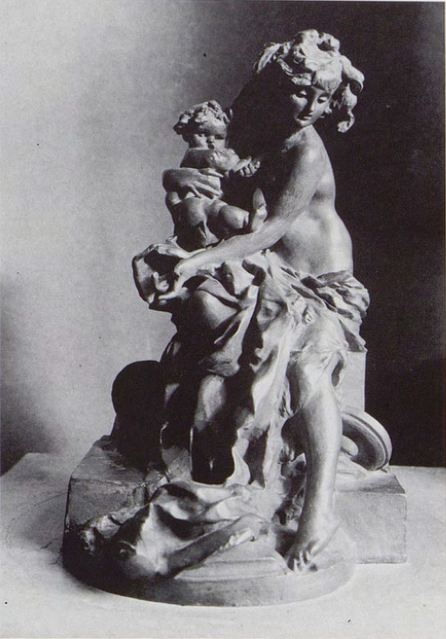
Rodin early period decorative art
Rodin’s Artistic Method
Rodin was a ‘Naturalist’ artist, very realistic yet sensual and expressive. He broke from the popular romantic and idealistic styles of his day. His art is often based on displaying the sorrow, hardship, and conflict of life. According to William H. Dale, he emphasized the concreteness of the flesh, believing that an individual’s character was revealed by his physical features.
Rodin had the ability to capture the deeper thoughts, emotions, and personality of his subjects. According to Georg Simmel “Rodin brought to the human figure an extraordinary variety of movement that reveals man’s inner life, feelings, thoughts, and personal vicissitudes.”
“Rodin realized increasingly that the living human being provided a more truthful, thorough, inexhaustible and exciting basis for good sculpture. Rodin was neither the first nor last modern artist to believe that the visible world was not alien but essential to art.” Artforum
“Rodin’s genius lay in the way he took the classical sculpted figure and gave it an animation and vitality that helped define the modern age. His work shaped the future of sculpture. Rodin would rise up to achieve a level of international fame and popularity that was unprecedented for a sculptor. Indeed, by the time of his death, Rodin was being likened to Michelangelo. His status as the father of modern sculpture remains undiminished and unchallenged.” The Art Story

The Torso of Adele, 1884, Musee Rodin, Paris.
Rodin made numerous sculptures of human body parts such as heads, torsos, and hands. He was making a break from traditional art and making a statement about the human form.

Musee Rodin, Paris
Rodin on Nature, Beauty, and Art
Like many great artists, Rodin held a spiritual view of art as an embodiment of the beauty and spirit of Nature. Rodin studied classical art under masters at art academies but he said that he developed his style by studying Nature.
“Art is the pleasure of a spirit that enters Nature and discovers that it too has a soul and which there divines the spirit of which Nature herself is animated.” Rodin
“Where did I learn to understand sculpture? In the woods by looking at the trees, along roads by observing the formation of clouds, in the studio by studying the model, everywhere except in the schools.” Rodin
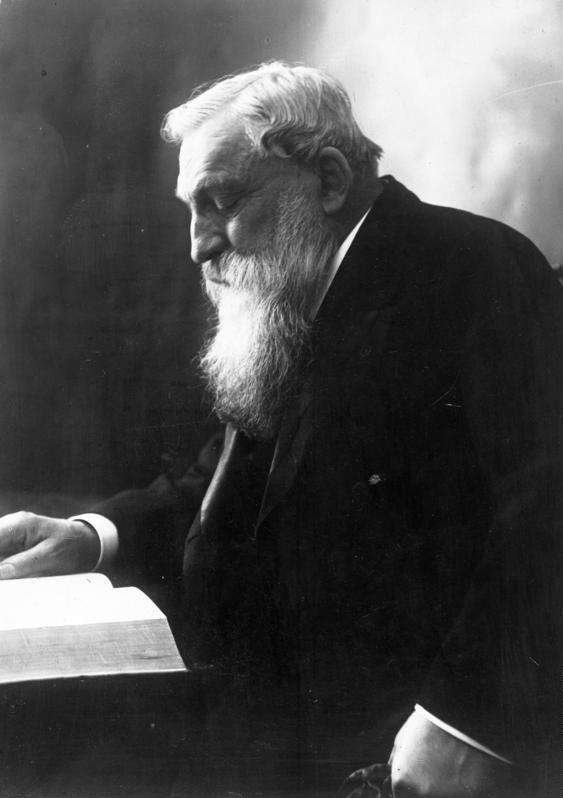
“There are unknown forces in Nature; when we give ourselves wholly to her, without reserve, she lends them to us; she shows us these forms, which our watching eyes do not see, which our intelligence does not understand or suspect.” Rodin
“If the artist only reproduces superficial features as photography does, if he copies the lineaments of a face exactly, without reference to character, he deserves no admiration. The resemblance which he ought to obtain is that of the soul.” Rodin
“Man enjoys living on the edge of his dreams and neglects the real things of the world which are so beautiful. The ignorant and indifferent destroy beautiful things merely by looking at the marble. Things that remake the soul of him who understands them.” Rodin
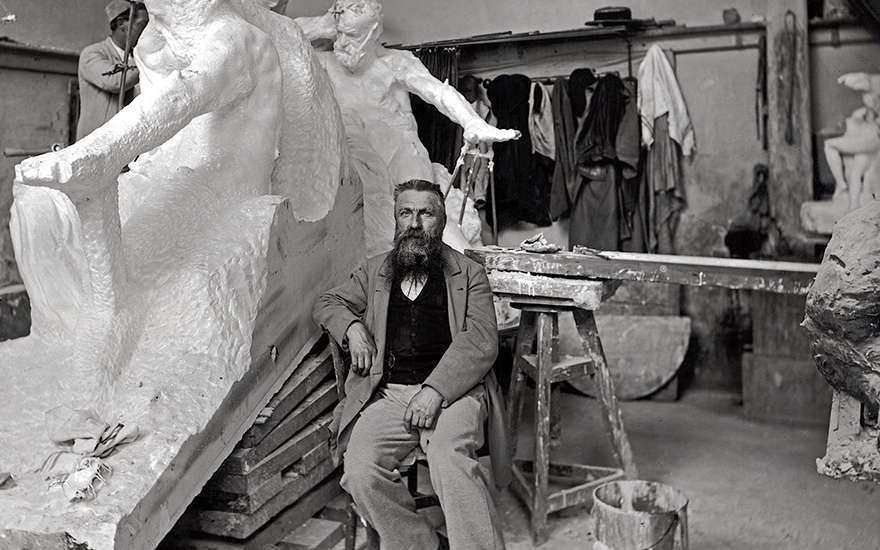
Rodin’s Art
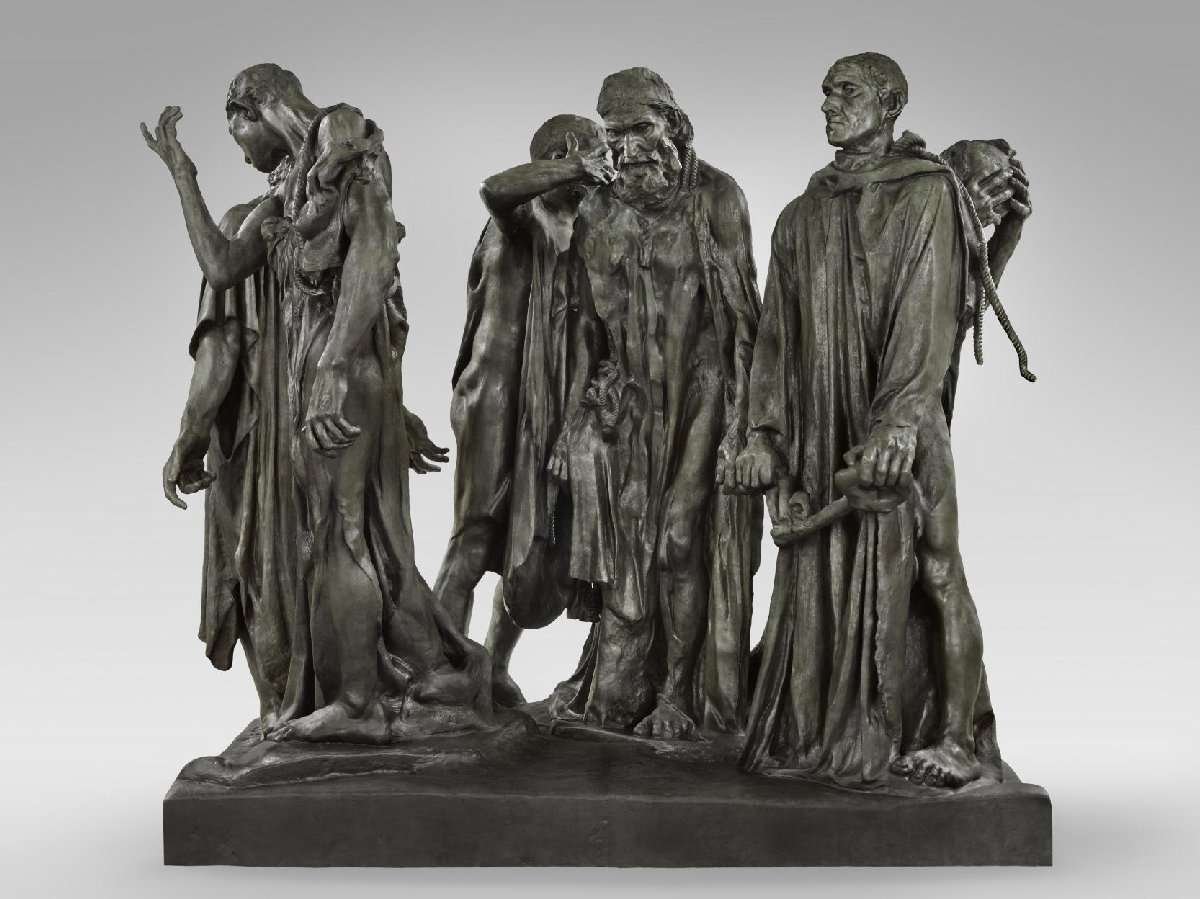
The Burghers of Calais, 1889, Museum of Modern Art, New York City.
Rodin rejected the traditional monument idealistic and heroic format glorifying fortitude and courage. Rather he focused on revealing the true range of emotions. He presents the pain, anguish, and fatalism of self-sacrifice.
Prominent leaders of Calais offered to sacrifice their lives to the English to save their fellow citizens during the Hundred Years War. They walk to the gallows with nooses around their necks.
“Those hands, those heads – they move in passionate synchrony, in a sculpture that is like a requiem mass. Rodin is not modern or ancient. He’s eloquent, direct, and simple.” The Guardian

The Burghers of Calais

The Burghers of Calais

The Three Shades, 1886, a casting at the Museo Soumaya, Mexico City. The original plaster is at the Musee Rodin in Paris.
In Dante’s Divine Comedy, the shades (the souls of the damned) stood at the entrance to Hell, pointing to an unequivocal inscription: “Abandon hope, all ye who enter here.”
The work was originally part of Rodin’s The Gates of Hell.

The Kiss, 1889, Musee Rodin, Paris
Controversial for its erotic content. The Kiss, was originally titled Francesca da Rimini, as it depicts the 13th-century Italian noblewoman immortalized in Dante‘s Inferno (Circle 2, Canto 5) who falls in love with her husband Giovanni Malatesta‘s younger brother Paolo.
The work is an offspring from Rodin’s The Gates of Hell.
Rodin indicated that his approach to sculpting women was “of homage to them and their bodies, not just submitting to men but as full partners in ardor.”
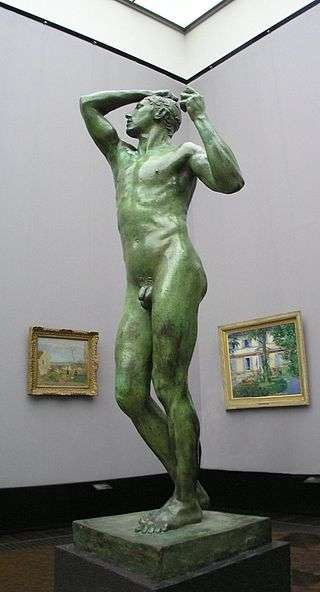
The Age of Bronze, 1877, Alle Nationalgallerie, Berlin, Germany
Rodin’s first master work at age 35 inspired by Michelangelo. He said it was “certainly among those which I carried imitative art farthest.” The sculpture was so life-like that he was falsely accused of fraud by using a casting of a living model. Afterward he changed his work so that he couldn’t be accused of fraud.

The Gates of Hell, 1884, Musee Rodin, Paris.
Modeled scenes were inspired by Dante’s Inferno and Michelangelo’s Sistene Chapel of the damned thrown into the chaos, torment, and despair of Hell. Comprised of 186 human figures.

The Gates of Hell fragment
“For a whole year I lived with Dante, with him alone, drawing the eight circles of his inferno. At the end of this year, I realized that while my drawing rendered my vision of Dante, they had become too remote from reality. So I started all over again, working from Nature, with my models.” Rodin
Rodin used parts of the Gated of Hell to create separate works of art, including Adam, Eve, The Three Shades, The Kiss, The Thinker, and others.

The Gates of Hell fragment
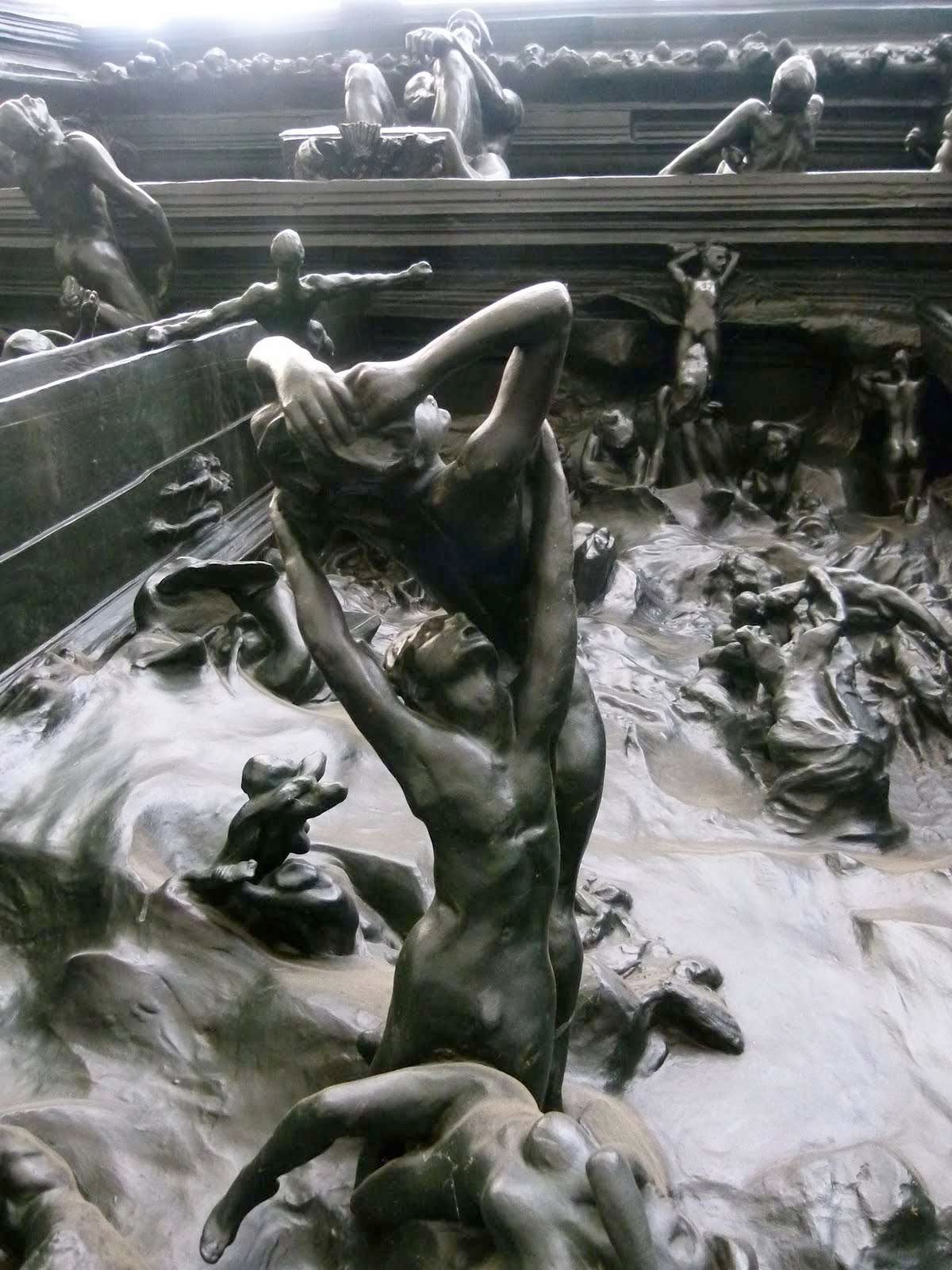
The Gates of Hell fragment

The Thinker, 1879-1889, Metropolitan Museum of Art, New York City
The Thinker was originally part of Rodin’s Gates of Hell. It was inspired by Dante and Michelangelo. He produced it as a separate sculpture which became his best known work. There are 27 castings of the statue at museums around the world.
“What makes my Thinker think is that he thinks not only with his brain, with his knitted brow, his distended nostrils and compressed lips, but with every muscle of his arms, back, and legs, with his clenched fist and gripping toes…He is no longer thinker, he is creator.” Rodin

The Walking Man, 1878, Musee d’Orsay, Paris
The public was not ready for this daring and innovative ‘abstract’ type of sculpture by Rodin. In response he put a head and arms on it for his work Saint John the Baptist Preaching.
“Profoundly unclassical, a break front the traditional rule of portraying likeness and into a realm where form existed for their own sake.” William H. Hale
Rodin said that “the human body is a temple that marches. It is a moving architecture.”

The Hand of God, 1898, Metropolitan Museum of Art, New York City
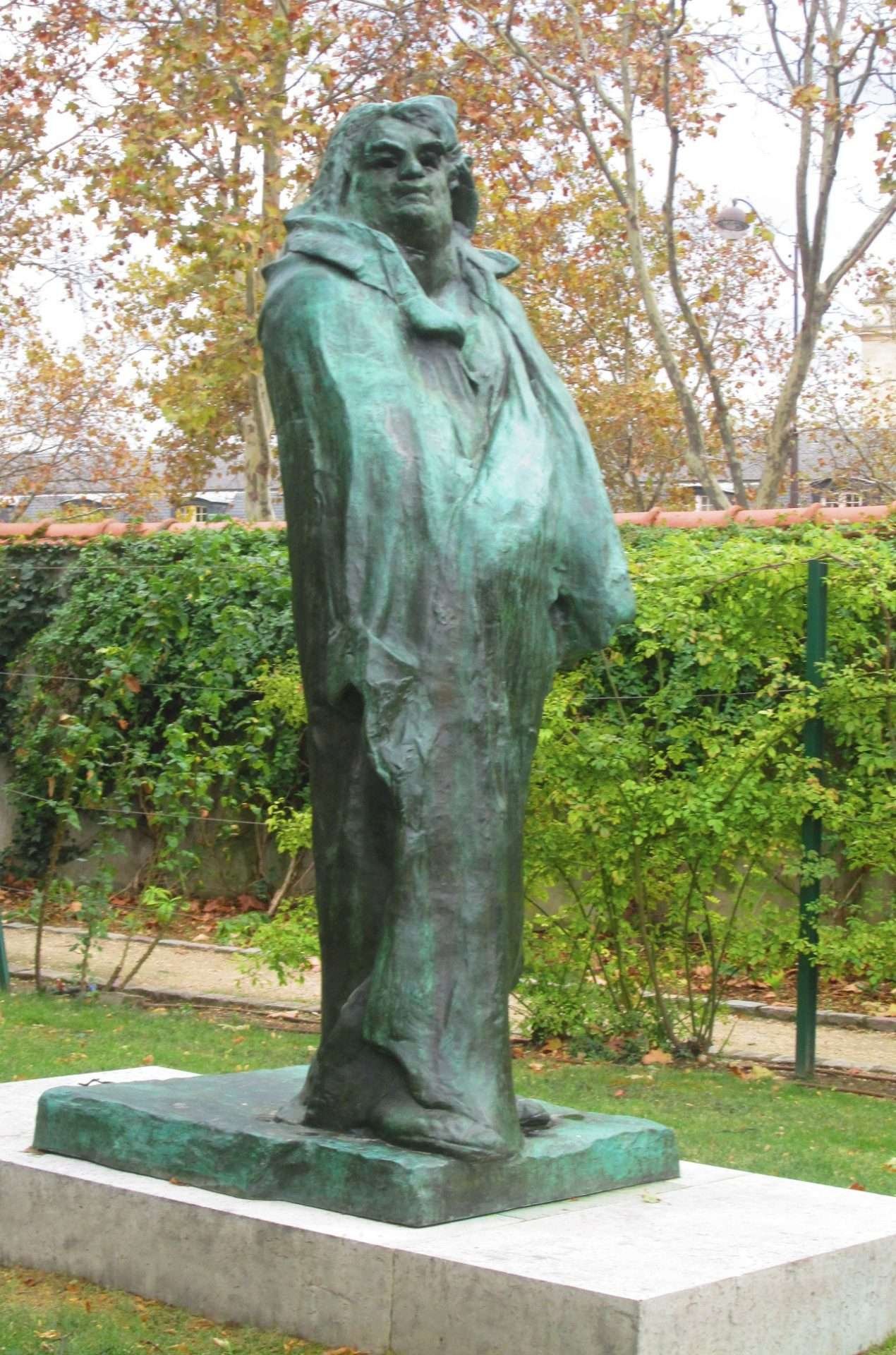
Monument to Balzac, 1897, Musee Rodin, Paris.
A tribute to French novelist Honore de Balzac. According to Rodin the sculpture aims to portray the writer’s persona rather the physical likeness. The Societe des Gens de Lettres rejected the work. This caused an uproar of French artists that defended Rodin’s work, such as Paul Cezanne, Toulouse-Lautrec, Claude Monet, Edgar Degas, and others.
According to Kenneth Clarke in his documentary Civilization, Rodin’s statue of Balzac is “the greatest piece of sculpture of the nineteenth century — perhaps, indeed, since Michelangelo,” continuing that, “Balzac, with his prodigious understanding of human motives scorns conventional values, defies fashionable opinions, as Beethoven did, and should inspire us to defy all those forces that threaten to impair our humanity: lies, tanks, tear gas, ideologies, opinion polls, mechanisation, planners, computers—the whole lot.”

Vaslav Nijinsky, 1912, Metropolitan Museum of Art, New York City.
Rodin made several works of dancers like his friend Edgar Degas.
Much like Rodin’s erotic art and defiance against the art establishment. “On May 29, 1912, Rodin attended the premiere of Vaslav Nijinsky’s modern ballet L’Après-midi d’un faune (Afternoon of a Faun), which scandalized Parisian audiences with its avant-garde choreography and sexually explicit content. The following morning, a front-page newspaper editorial signed by Rodin praised the “deliberately awkward” and “jerky” movement. Nijinsky posed for Rodin a few days later. The strong profile of this sculpted sketch pays tribute to his choreographic style, which mimicked Greek bas-relief sculpture.” Metropolitan Museum of Art.
Sources
Rodin, Albert E. Elsen, Museum of Modern Art, NY, 1963.
Rodin, Monique Laurent, Konecky & Konecky, NY, 1988.
The World of Rodin: 1840- 1917, William H. Hale, Time-Life Books, NY, 1965.



